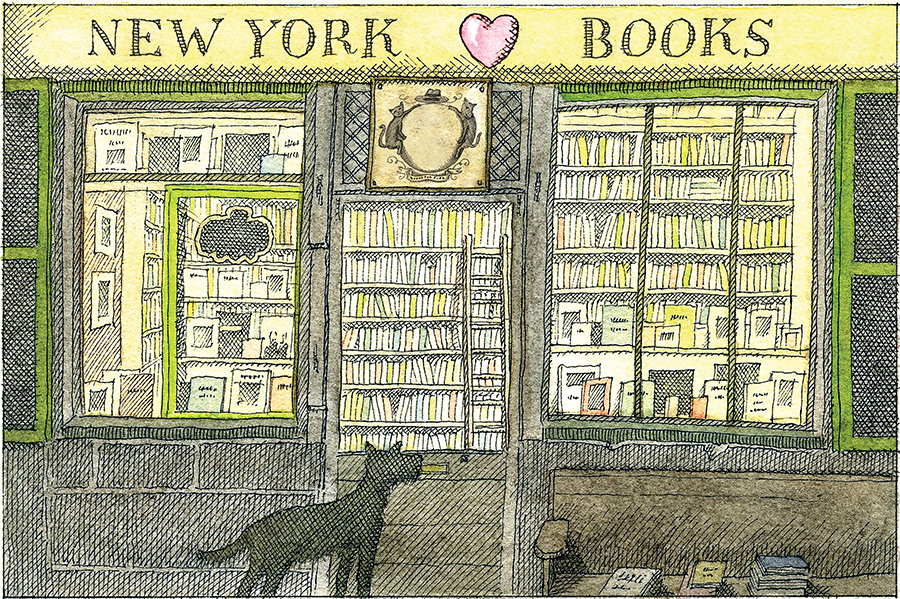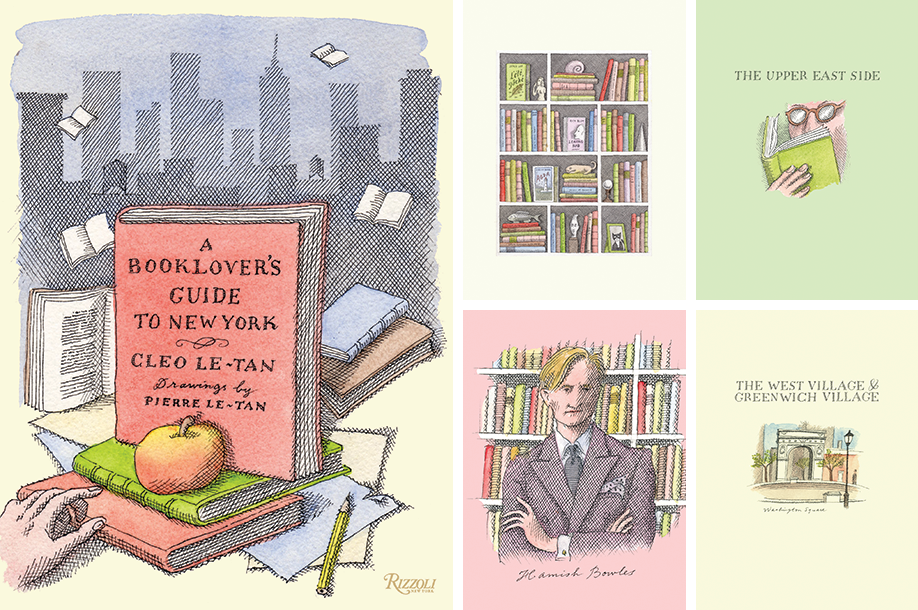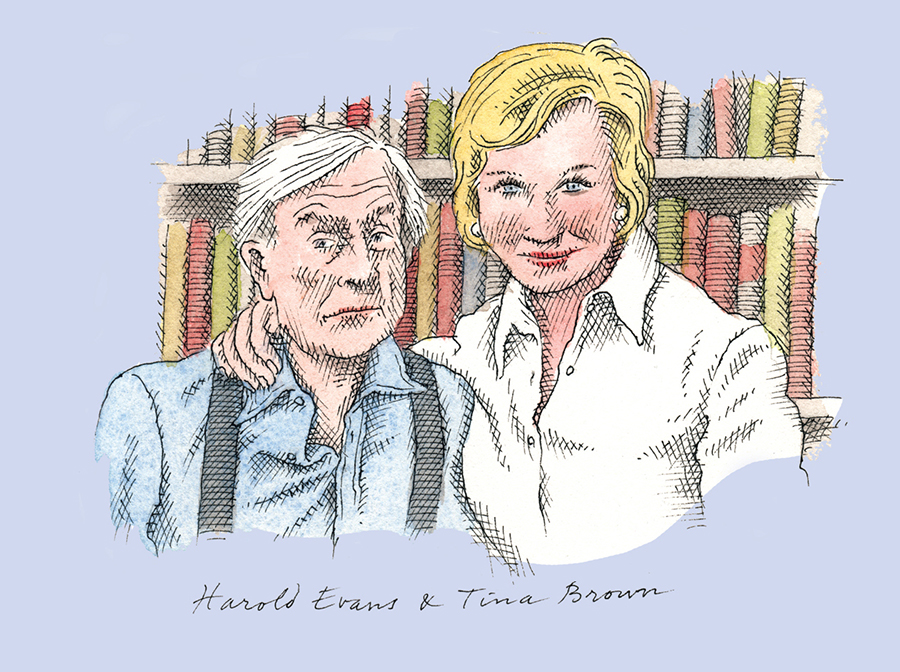
Illustrator Pierre Le-Tan died on September 17. He was 69. Sadly, I had lost touch. Working with him when I was art director of the New York Times Book Review turned into a friendship lasting over 15 years. On my first trip to Paris, I stayed with Pierre and his family in their top floor flat overlooking a postcard view of Paris roofs. It was a magical time (as any of you know who recall your first a visit to this exquisite city). Pierre lived like a classic French gentleman artiste. Books stacked everywhere. Antique furniture smartly mismatched. Elegantly framed impressionist and fauvist art hanging everywhere — some of value, some that became valuable. When he came to New York he stayed in friend’s apartment at the Dakota (it couldn’t be any other place).
I had not seen or heard from him in a dozen years or so, much to my regret. But I kept tabs on two of his accomplished children, Olympia Le-Tan, an emerging fashion designer (known, among other things, for handbags embroidered with book cover art) and Cleo Le-Tan, a memoirist, whose just published A Booklover’s Guide to New York (Rizzoli) landed on my desk only two weeks before I learned of Pierre’s passing.

I was readying myself to write about Cleo’s book, illustrated by Pierre in his inimitable cross-hatched watercolor style. It was a witty style that was introduced to New York in the 1970s through the nineteen New Yorker covers he had made — which I would describe as Rex Whistler meets Saul Steinberg and David Hockney. Incidentally, just prior to receiving the book I had serendipitously thought about Pierre and how I’d like to see him again in Paris. I put my “review” of Cleo’s book on hold until I could write a proper tribute to Pierre.
I had written about his work in one of my earliest books, Man Bites Man, about contemporary satiric and cartoon artists. He did not fit exactly into the mold of some of the other subjects (Jules Feiffer, Ed Sorel, Ronald Searle, Andre Francois, Sempé, R.O. Blechman, etc.): “Unlike others in this volume, his innocent approach does not disguise issues of great significance. Le-Tan’s drawings are not weapons at all, and what bite they have is not directed at any concrete foe. His flights of fancy simply reflect his unusual comic obsessions,” I wrote. Pierre was not a humorist by design. But he was witty by inclination. He told me he developed a passion for the art and literature of the Bloomsbury group, and although he was French (Vietnamese father and French mother), he tilted towards England in his taste and mannerisms. (In fact, the last time I ever got drunk, we were driving around London with Pierre behind the wheel of his English in-laws’s classic Bentley).
Le-Tan was an inventor — of characters. “He developed a fictional rogues’ gallery of tycoons,” I wrote in Man Bites Man. “’They were not based on anyone specific,’ he told me. ‘I did them simply because the rich are fun to look at.’” He loved impishly toying with certain members and quirks of the French upper class, their barroom haunts in Paris and their lives on the Riviera, as much as he enjoyed making fantasies about invented personalities.

It is bittersweet to see that his last work was done with his daughter. Probably the best tribute to him is writing about the book, which in addition to having a certain Le-Tan joie de vivre in these joie-less times, is a great theme: Books, book lovers, New York and by two Le-Tans, what could be better.
Cleo Le-Tan, who lives in New York, has thoroughly researched a neighborhood by neighborhood tribute to the best new, used, and antiquarian shops that still remain open in New York. Once upon a time, the city was so full of them one could do the rounds of most in a week and come back a week later and there’d be new stock for the picking. Sometimes Pierre and I would go together. Cleo is a jaunty writer who spent much of her teenage years around Paris and London “uncovering hidden treasures.” She writes about the treasures she discovered and “The cast of characters I encountered along the way [who] were as fascinating as the literature: an old, owl-faced rare book collector with tiny round glasses, a long white beard, and hair to match; a perpetually furious librarian who hushed and scolded children- even those on their best behavior; and, of course, there were the eccentric and unpredictable dealers. . . in shops so old you could still smell the books on your clothes days later.”
For the veteran book fancier, like me, there are many familiar locales, but for younger bibliophiles — and YOU are the audience here — this is essential reading. There are, in fact, some locales that are new to me (like Gramercy Typewriter Company on West 17th street, only a block from where I used to live), proving you can teach an old book collector new tricks. Cleo covers not just bookstores, but libraries, bars, and restaurants with library themes, publishers, and hotels with libraries (a surprisingly large number, including the Plaza and Sherry Netherland). Interviews with literary personalities and itinerant street booksellers are peppered throughout, along with spot drawings by Pierre that do not overpower the text but injects a Le-Tan aura to this Le-Tan book.
I don’t know whether or not Pierre or Cleo were aware that this might be a swan song for him, but in Cleo’s writing I can somehow hear Pierre telling her some of the best spots to go. And she is bringing him up to date.
